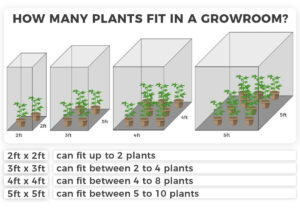The art of discretion as an indoor grower is based on sight, smell, and sound. If these three factors are well covered, you should never need to worry about an unexpected knock on the door or for any neighbors to ever suspect you of being a green-fingered enthusiast. In this article, I explain all you need to know about how to soundproof your grow room or grow tent, why you should soundproof in the first place, how to make a DIY muffler at home, and above all, my top tips for a silent grow location.
Why should I soundproof my grow room or tent?
Well, why not? Running a quietly operated indoor grow room is not only pleasant for your own sake; it will also remove any concerns that a close-by neighbor may become aware of what is happening one wall away.
The amount of noise you create is like an audio footprint that needs to be well-considered. Not only will soundproofing your grow tent, converted room, attic, or basement make life easy, it will also keep away the unwanted presence of police or thieves.
What are the noisiest parts of my grow room and tent?
Exhaust fans, oscillating fans, wall fans, and hydroponic pumps will be your main source of noise. Sometimes, it can be difficult to reduce the noise levels of industrial-powered fans, especially large-sized ones with the capacity to remove up to 1300+m3/h- those will produce 45–55 decibels of sound.
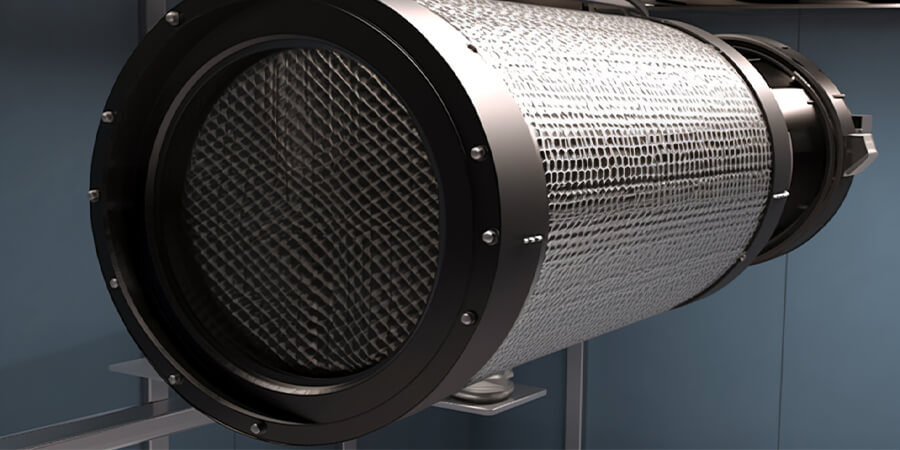

The sound of air passing through ducting is also one of the main culprits of a noisy grow space. As a first-time grower, you may plug in all your equipment and be overwhelmed by the noise output. I remember the first time I set up my extraction at home while living with my parents. It was so loud you could hear it while watching TV downstairs, which bothered them deeply.
9-12 inch fans at full speed can also become noisy, especially if clipped to tent poles or sat directly on the floor. You would be surprised at the difference mounting a fan correctly can make inside a tent or grow room wall. The other main source of noise you may encounter if working with hydroponics is the required aquarium pumps and air pumps.
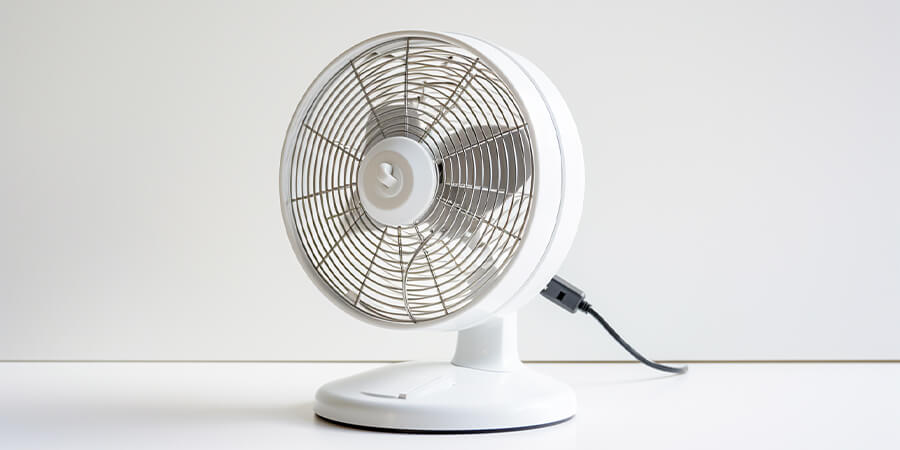

Once plugged, air pumps will make a loud and clear humming sound close to the 50-decibel mark. Not only will air pumps be switched on 24 hours a day, they may become louder over time until they need replacing. This can also be the case with water pumps, which circulate nutrient solution back to the reservoir.
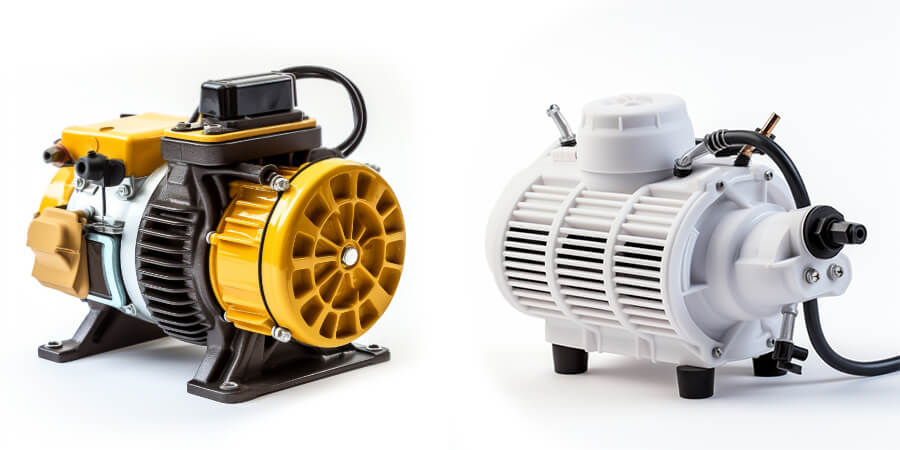

Ready to learn more about building the perfect grow room? Please sign up for our Grow Bible below and learn all the tips and tricks from Robert Bergman himself!
How to soundproof my indoor cannabis garden
The extent of how much time, effort, and money you invest in soundproofing your grow room will be based on budget, space, and experience. Below are some of my personal favorite ways to help you significantly reduce the amount of noise pollution to consider.
1. Passive cooling grow lights
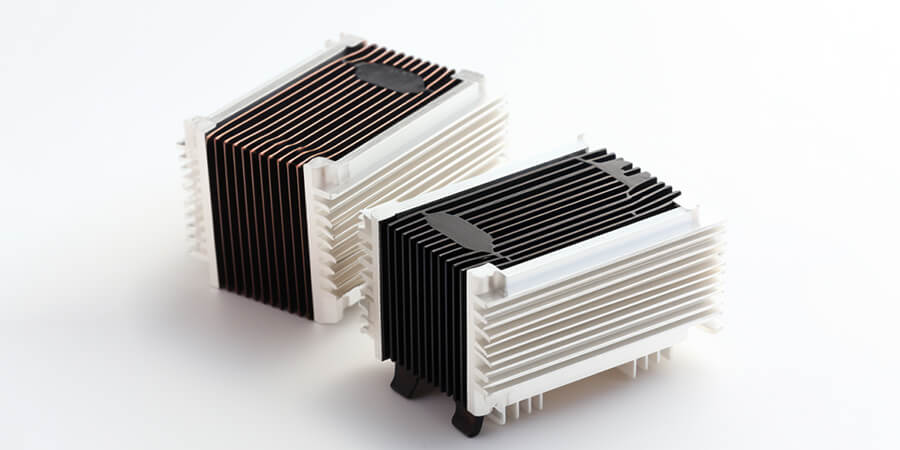

In recent years, passive-cooled technology using heat sink designs has allowed horticultural grow lights to operate in silence. Unlike some older LED lights with noisy internal fans prone to dust and breaking down, passive-cooled lights mean operating a discreet and quiet grow room as far as lighting is concerned.
The benefits of passive cooling lights
There is no need to be concerned about internal fans malfunctioning, which is what t I enjoy about using passive-cooled lighting. When the internal fan of a grow light stops working or begins to lose power substantially, you can be left jeopardized, causing a temperature and humidity fluctuation.
Avoid these mistakes
- Spending your hard-earned money on cheap LED lights.
- Low PAR levels; they’ll only produce small yields, so do your research.
- Forgetting that high-powered LED lights may not be the most cost-effective.
- Choosing old designs with a small output of light and outdated tech.
2. Acoustic ducting
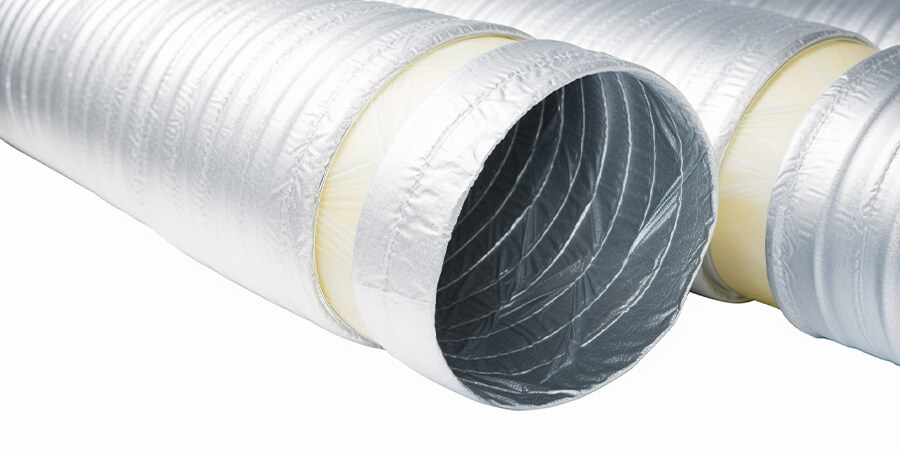

Traditional aluminum ducting is cheap and cheerful, but if you are prepared to invest in acoustic ducting, you can significantly reduce noise levels. I always use acoustic ducting attached to silencers and find this is the most silent and discreet way to transport high volumes of air. The cost of acoustic ducting compared to standard aluminum can be 2–3 times the cost; however, it is well worth the investment over time.
The benefits of acoustic ducting
Using acoustic ducting can take the edge off, allowing your room to exhaust air in a quiet and discreet fashion. However, it is worth knowing that acoustic ducting can be expensive. When installing in a large-sized room, your costs may rapidly increase.
Avoid these mistakes
- Allowing the ducting to droop when you are hanging the equipment.
- Installing without a face mask for protection from asbestos.
- Handling the ducting with skin exposed. This can cause irritation.
- Attaching the ducting with a loose fitting, causing air to escape.
3. Silencers
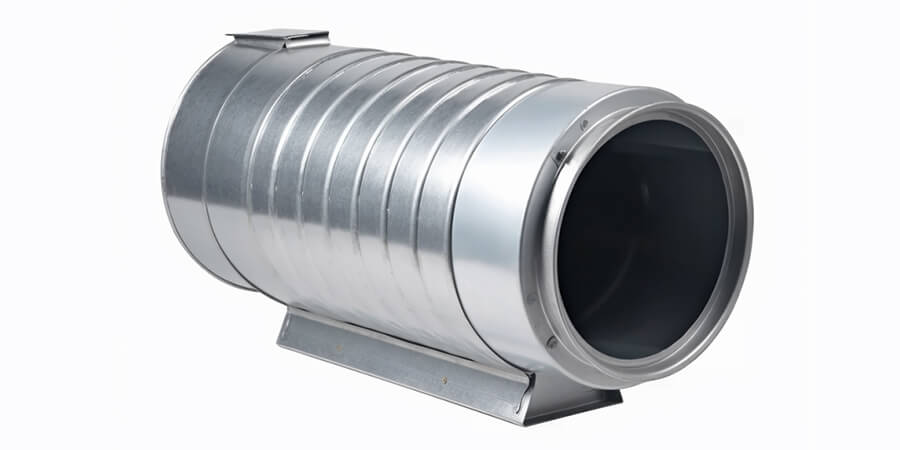

In my opinion, silencers are one of the most effective means of controlling noise levels. They act as a muffler, allowing air to pass without losing power or efficiency. I always like to use two silencers and connect one on either side of the extractor. You will be amazed at the difference.
The benefits of silencers
Silencers are one of my personal favorite additions to any indoor secret garden. They are lightweight, solid in design, and will last for years. You can easily attach them to ducting, and when using two, you will find the noise levels will drop to a level all the members of your house will be happy with.
Avoid these mistakes
- Overcrowding inside small-sized tents when installing silencers.
- Installing too few. Using one works well, but spend the extra money and buy two.
- Incorrect fir. Make sure that the silencer has an airtight, secure fit.
4. Plug dimmers


These simple but highly effective devices act by connecting to the plug socket then allowing you to change the power output. Turning a dial left or right allows airflow and noise to be lowered at will. Plug dimmers work like a charm when using large-sized extractors or for those who sleep in the same room as their tent or stealth grow box.
I recommend never lowering the dial below 25%, as this can cause some ventilation systems to switch off or produce such little output it is not worth it doing. Plug dimmers are a wonderful tool for a visiting landlord, bedtime, and finding the sweet spot that works for you while providing adequate levels of exhausted air.
The benefits of plug dimmers
Plug dimmers are an excellent way to reduce noise levels and the amount of power received, thus reducing electricity bills. One thing I love about these cheap and highly effective devices is their versatility. They can also be used on house lamps to lower lighting.
5. Using T.T. fans
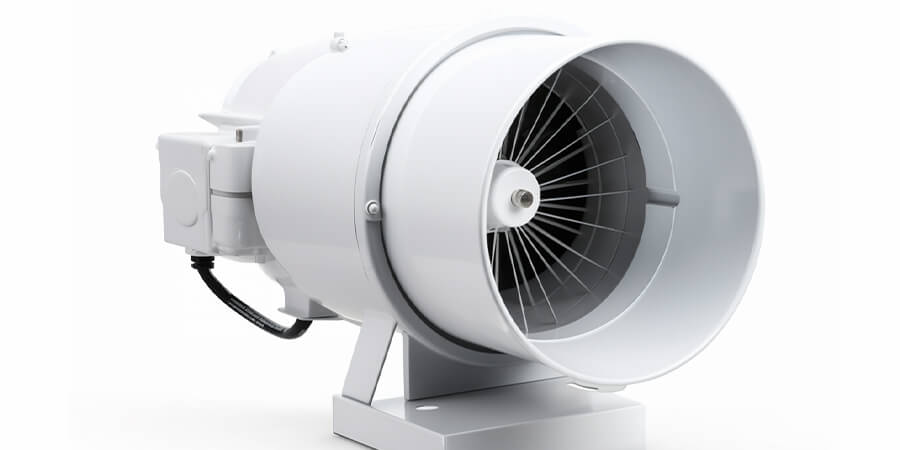

RVK fans are the large-sized round extractor fan that is most commonly used when growing cannabis indoors. The only issue with RVK fans is the fan’s noise when spinning at full power and the noise from the air being produced. T.T. fans are smaller extractors that can serve the purpose of a small-sized stealth grow box and are far quieter than the RVK model.
The benefits of T.T. fans
Growers operating a stealth grow box will benefit the most from T.T. fans. These small-sized fans are light, easy to hang, and make little noise when on full power running 24 hours a day.
Avoid these mistakes
- Wiring the T.T. fans wrong and causing a blown fuse (easily done).
- Buying low-powered commercial bathroom exhaust fans.
- Having short plug wires. Make sure your plug wire is at least 2 meters.
- Not replacing the T.T. fan after every second harvest.
6. Acoustic wooden boxes
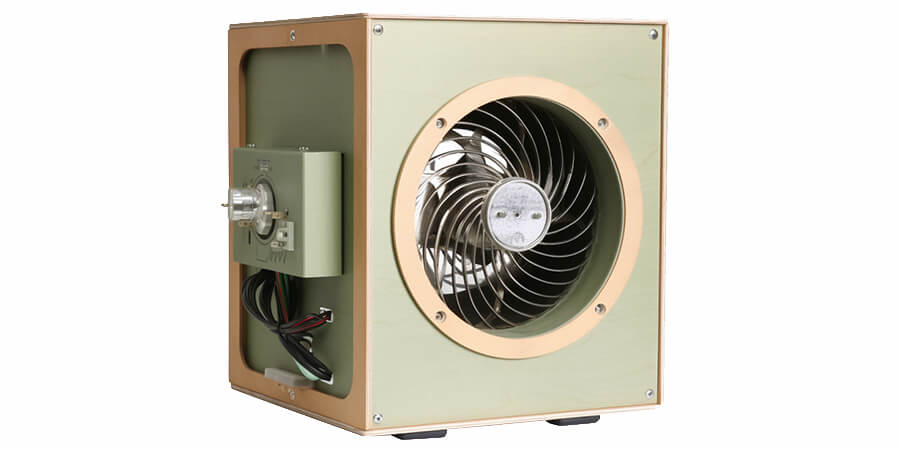

You may have seen these in your local grow shop or online and thought, what is that? These wooden boxes with soundproof foam lining are designed to house an RVK fan and eliminate the noise produced by the moving parts. When connected to a plug dimmer, acoustic wooden boxes can really pay off big time.
The benefits of acoustic wooden boxes
What I like about acoustic wooden boxes is that they allow you to sit the box firmly on the floor. This means you can connect the ducting from the box through the top of the tent, giving you plenty of space inside the tent.
Avoid these mistakes
- Hanging the heavy wooden box inside the tent using chains and metal hooks.
- Making a poor-quality homemade version that lacks efficiency.
7. Silent operating hydroponics
One way to grow the biggest yields possible and operate a silent grow room is to use certain hydroponic systems that do not use loud air pumps like DWC. Dripper systems with hydroton and NFT tables with a pump left on 24 hours a day are both great ways to produce minimal noise while maximizing your grow space. This is because NFT water pumps run quietly, use a small flow of water, and only make a dripping sound. Dripper systems can run 24 hours a day (with 100% hydroton) or in 15-minute segments, again only producing a little noise when operating.
The benefits of silent operating hydroponics
I recommend using hydroponics once you have a few grows under your belt and are familiar with the plant, feeding schedules, pH, and E.C. maintenance. Once you get the hydro bug, you never look back, and it can quickly develop into a passionate hobby, as it did with me! The main benefits are yield, short vegetative times, and a clean grow room.
Avoid these mistakes
- Loud air pumps can be a nightmare, especially if sleeping in the same room.
- Vibrating water pumps will shake floorboards and cause reverberation.
- Large reservoir systems can use much more nutrients and take up more space.
- Only using one air stone; instead, use extra air stones to avoid pressure buildup.
8. Electronically commutated fans (E.C.)
In the same way LED lighting changed indoor growing, E.C. fans have also become the preferred choice for the experienced grower. For these, an exhaust fan designed to convert A.C current into direct current (D.C) works with a silent brushless motor. These high-priced exhaust fans have adjustable speeds, produce little noise, and are energy efficient compared to RVK fans.
The benefits of E.C. fans
These fans may set you back in the financial department; however, after buying my first-ever E.C. fan, I cannot recommend them enough. You can adjust the power using a dimmer with most E.C. fans, allowing you to operate a silent room.
Avoid these mistakes
- Focusing on a good deal only and going with a non-reputable, cheap brand.
- Not checking the amount of air per hour they can exhaust.
- Hanging inside without assistance, E.C. fans can be quite heavy.
Grow room specific soundproofing considerations
Sound-absorbing materials are an excellent way to convert a spare room, old cellar, or basement to a warm, temperature-controlled environment. Not only will they act as an insulator, they also reduce reverberation and noise. Below are some precautions to consider while planning for your next indoor space.
Weatherstripping tapes on doors & windows
- This is especially important to prevent light breaks and ensure an airtight seal.
- Easy to apply, and for the extra small cost, it is well worth it.
Padding dry walls
- Sound will become muffled through padded walls.
- Using acoustic foam ducting or asbestos foam works well.
- Padding will also help prevent cold spots and moisture build-up.
How to Make a DIY Exhaust Muffler
The easiest way to make a homemade muffler is to use a deep water culture 20-liter bucket. You will need to source the following materials before starting; however, you’ll end up with a very simple and highly effective end product. This example is based on a 6-inch ducting; however, you can use up to 4-10-inch ducting (100-250mm)
Materials
– Acoustic foam (music studio quality)
– 20-liter bucket
– Aluminum ducting
– Acoustic adhesive foam
– Drill with a 6-inch hole saw drill bit
Step 1:
Measure a circle that is 6 inches in diameter. You will want to make a hole at the bucket’s base so the ducting can easily and firmly fit inside.
Step 2:
Using your acoustic foam, measure out the exact length so you can line the wall of the bucket. There should be a snug fit, ensuring that no plastic is exposed.
Step 3:
Once you are happy with the amount of foam, wear a face mask and gloves before spraying the acoustic adhesive foam. In my opinion, this is the best type of glue on the market for this job.
Step 4:
Now drill a 6-inch clean cut through the bucket and insert the ducting into the base of the bucket. The acoustic foam will absorb the exhausted air and instantly reduce the noise level.
Step 5:
I recommend inserting two hanging hooks in the sides of the bucket to make life easy when hanging horizontally.
Step 6:
Switch on your fan and let the muffler do all the work!
When you have set up your soundproof grow room, it’s time to get the seeds for your grow! You can find a selection of our best seed deals below.
My top tips for operating a stealth and silent grow room
Top tip #1:
Always make sure that the ducting is airtight when installing your indoor ventilation. Use duct tape or metal clips. This will help you achieve a top-quality airtight fitting.
Top tip #2:
Be aware of the noise coming from your house or apartment. This refers to where the air is being blown out and if it can be heard from a close-by neighbor, or worst case, standing in front of your house. Do sound checks and listen for any humming or whirring noises.
Top tip #3:
Be careful when removing the trash and keep nutrient bottles, pots, soil, leaves, and stems out of sight. There is no point in running the world’s quietest grow room and not taking care when it comes to discretion.
Top tip #4
Use foam or rubber mats to sit oscillating fans on top of. The layer of mat between the moving fan and the floor will reduce the amount of reverberation through the floorboards.
My final thoughts
I have invested thousands of dollars in all types of ventilation equipment over my lifetime. I wish I had been aware of many of the points covered in this article beforehand. Operating a near-silent grow room is possible, especially for those currently working with a stealth grow box design.
Avoid cheap equipment that is only destined to fail over time, and always be aware that an old fan, air pump, or water pump can become very noisy and, in some cases, can develop into a nuisance for any indoor grower or neighbor. Make sure your grow tent is always sealed and airtight and all ducting is firmly attached.
Be prepared to invest in making your grow room/tent acoustically sound, and you will always have the ultimate peace of mind as an indoor grower. For those willing, try and build a rapport with your neighbors.
As always, if you want to take your growing skills to the next level, I recommend reading Robert Bergman’s Grow Bible!
- SEO Powered Content & PR Distribution. Get Amplified Today.
- PlatoData.Network Vertical Generative Ai. Empower Yourself. Access Here.
- PlatoAiStream. Web3 Intelligence. Knowledge Amplified. Access Here.
- PlatoESG. Carbon, CleanTech, Energy, Environment, Solar, Waste Management. Access Here.
- PlatoHealth. Biotech and Clinical Trials Intelligence. Access Here.
- Source: https://www.ilovegrowingmarijuana.com/growing/how-to-soundproof-your-grow-room-or-tent/
- :has
- :is
- :not
- :where
- $UP
- 1
- 24
- 31
- 32
- 33
- 35%
- a
- About
- above
- Achieve
- acoustic
- Act
- additions
- adjust
- adjustable
- After
- again
- AIR
- All
- allow
- allowed
- Allowing
- allows
- also
- always
- amazed
- amount
- an
- and
- any
- Apartment
- Apply
- ARE
- Art
- article
- AS
- Assistance
- At
- attach
- audio
- avoid
- aware
- away
- back
- base
- based
- BE
- because
- become
- been
- before
- being
- below
- benefit
- benefits
- BEST
- between
- Big
- Biggest
- Bills
- both
- Box
- boxes
- brand
- Breaking
- breaks
- budget
- Bug
- build
- Building
- but
- buy
- Buying
- by
- CAN
- cannabis
- cannot
- Capacity
- care
- careful
- case
- cases
- Cause
- causing
- certain
- chains
- change
- changed
- cheap
- checking
- Checks
- choice
- Circle
- clean
- clear
- clips
- Close
- cold
- comes
- coming
- commercial
- commonly
- compared
- concerned
- Concerns
- Connect
- connected
- Connecting
- Consider
- controlling
- convert
- converted
- correctly
- Cost
- cost-effective
- Costs
- could
- covered
- create
- Culture
- Current
- Currently
- Cut
- day
- deal
- Deals
- deep
- Department
- Design
- designed
- designs
- desk
- destined
- develop
- Devices
- DID
- difference
- difficult
- direct
- directly
- discretion
- Diy
- do
- doing
- dollars
- done
- Door
- doors
- down
- Drop
- dry
- Dust
- e
- easiest
- easily
- easy
- Edge
- Effective
- efficiency
- efficient
- effort
- either
- electricity
- electronically
- eliminate
- encounter
- end
- energy
- enjoy
- enough
- ensure
- ensuring
- enthusiast
- equipment
- escape
- especially
- Ether (ETH)
- EVER
- Every
- example
- excellent
- expensive
- experience
- experienced
- Explain
- exposed
- extent
- extra
- extraction
- Face
- face mask
- factors
- FAIL
- familiar
- fan
- fans
- far
- Fashion
- Favorite
- feeding
- few
- filter
- final
- financial
- Find
- finding
- firmly
- First
- first time
- first-ever
- fit
- fitting
- Floor
- flow
- fluctuation
- Foam
- following
- Footprint
- For
- from
- front
- full
- Garden
- get
- Giving
- going
- good
- great
- Grow
- Growing
- Grows
- had
- Hang
- Happening
- happy
- harvest
- Have
- hear
- heard
- heavy
- help
- High
- highly
- Hole
- Home
- Hooks
- hour
- HOURS
- House
- How
- How To
- However
- HTTPS
- hydroponic
- i
- if
- important
- in
- inches
- Increase
- Indoor
- inside
- installing
- instantly
- instead
- internal
- into
- Invest
- invested
- investment
- issue
- IT
- Job
- jpg
- Keep
- Know
- Knowing
- landlord
- Last
- layer
- LEARN
- least
- Led
- left
- Length
- let
- Level
- levels
- Life
- lifetime
- light
- Lighting
- lightweight
- like
- Line
- lining
- little
- living
- local
- location
- Look
- lose
- losing
- loud
- louder
- love
- lower
- lowered
- lowering
- Main
- make
- Making
- many
- mark
- Market
- mask
- materials
- max-width
- maximizing
- May..
- mean
- means
- measure
- Members
- metal
- mind
- minimal
- model
- money
- more
- most
- Motor
- moving
- much
- Music
- my
- Need
- needs
- neighbors
- never
- next
- NFT
- no
- Noise
- of
- off
- often
- Old
- older
- on
- once
- ONE
- ones
- online
- only
- operate
- operated
- operating
- Opinion
- or
- Other
- our
- out
- output
- over
- overwhelmed
- own
- parents
- parts
- pass
- Passing
- passionate
- passive
- Pay
- peace
- per
- perfect
- personal
- picture
- Place
- planning
- plant
- plastic
- plato
- Plato Data Intelligence
- PlatoData
- please
- Plenty
- plug
- Plugged
- Point
- points
- Police
- Pollution
- possible
- power
- preferred
- prepared
- presence
- pressure
- prevent
- produce
- Produced
- producing
- Product
- protection
- providing
- pump
- pumps
- purpose
- quality
- quickly
- quietly
- quite
- rapidly
- really
- received
- recent
- recommend
- reduce
- reducing
- refers
- remember
- remove
- removing
- required
- research
- right
- ROBERT
- Room
- round
- rubber
- Run
- running
- sake
- same
- saw
- Second
- Secret
- secure
- seed
- seeds
- seen
- segments
- selection
- serve
- set
- Shop
- Short
- should
- side
- Sides
- Sight
- sign
- significantly
- Silence
- Simple
- sit
- skills
- Skin
- sleep
- small
- smaller
- Smell
- So
- soil
- solid
- solution
- some
- sometimes
- Sound
- Source
- Space
- specific
- speed
- speeds
- spend
- Spot
- spots
- standard
- standing
- Starting
- Stealth
- stems
- STONE
- Stones
- Stops
- studio
- substantially
- such
- sure
- surprised
- sweet
- Switch
- switched
- Systems
- T
- Take
- taking
- tape
- tech
- Technology
- tent
- than
- that
- The
- their
- Them
- then
- There.
- These
- they
- thing
- this
- those
- thought
- thousands
- three
- Through
- Thus
- time
- times
- tip
- tips
- tips and tricks
- Title
- to
- too
- tool
- top
- transport
- try
- Turning
- tv
- two
- type
- types
- ultimate
- under
- Unexpected
- unlike
- until
- unwanted
- use
- used
- using
- versatility
- version
- very
- volumes
- Wall
- want
- warm
- was
- watching
- Water
- Way..
- ways
- WELL
- What
- What is
- when
- which
- while
- WHO
- why
- will
- willing
- Wire
- with
- without
- wonderful
- wooden
- Work
- working
- works
- world’s
- worry
- Worst
- worth
- would
- Wrong
- years
- Yield
- yields
- you
- Your
- zephyrnet







